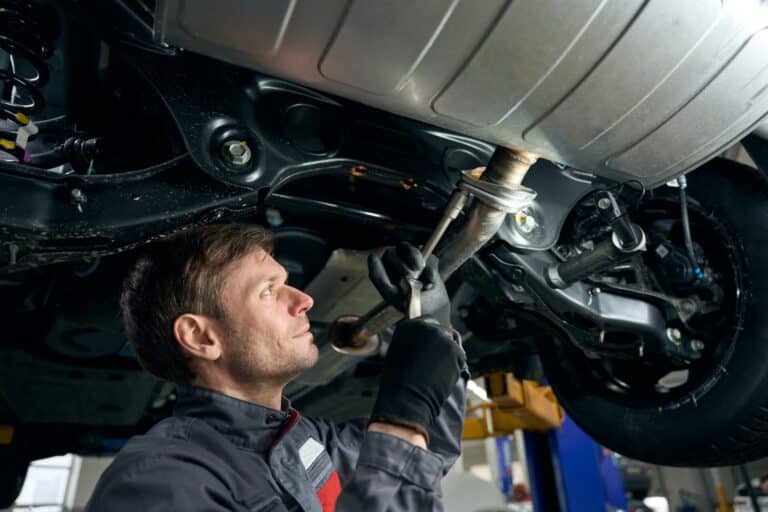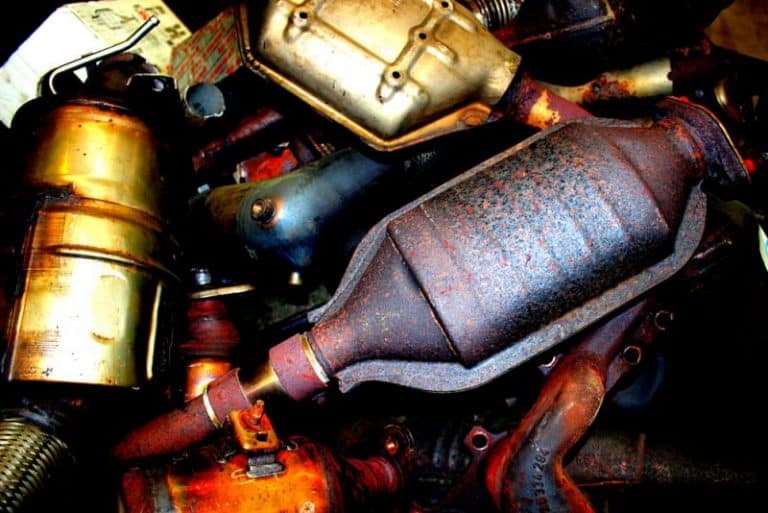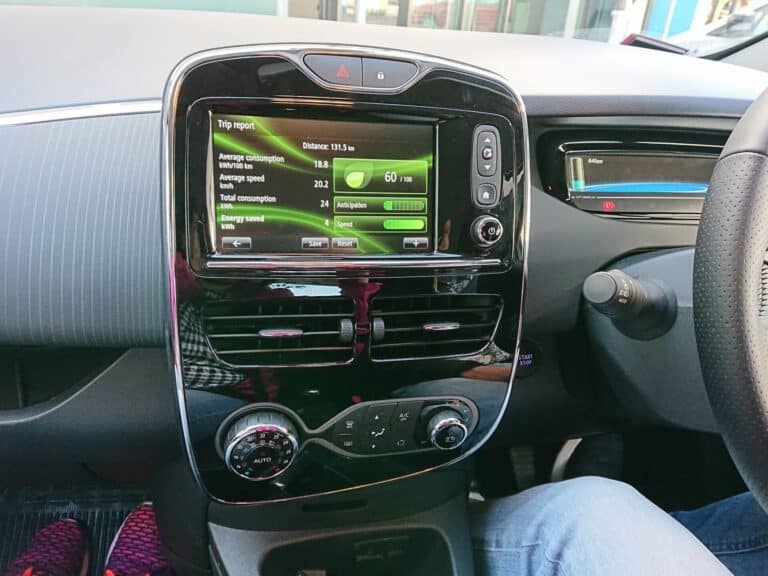How To Bypass Service Suspension System? (Beginners Guide)
A car’s service suspension system makes the vehicle safe and comfortable. The system keeps the car’s wheels on the same level even when driving over bumps and dips on the road.
The system uses struts, springs, and shocks so that only the wheels raise or lower during transit.
Although air suspension is useful, you can choose to disable or bypass it. All you need to do is remove a plug underneath the vehicle.
The Service Suspension System
The air suspension warning light usually turns on in your vehicle due to an issue with the air suspension bags. An issue could mean a leakage or inflation.
System suspension uses inflatable bags to keep the wheels on the same level and provide a smooth experience for the vehicle’s occupants.
Additionally, some more sophisticated systems will adjust the vehicle to ensure that the ride is comfortable even on rough terrain.
Also Read: Carli Vs Thuren Suspensions (In-Depth Comparison)
Usually, the air suspension system has three components.
- An air compressor
- Four bags at each wheel
- Height sensors
Why Bypass the Service Suspension System?
Once you turn on your car, the system checks each component to look for leaks. You may want to read about Service Def System See Dealer as well as a beginners guide.
If the computer detects any abnormalities, the air suspension warning light goes on.
Unfortunately, some drivers do not appreciate that, so they decide to bypass air suspension on their vehicle.
Further, if any of the service suspension system parts are damaged, like the auto-leveling shocks are bad and the cost of repair is too high.
One could opt for non-auto leveling shocks, which means that the cost of repair will be lower, but the air ride light will be on at all times.
Also, in some vehicles, you can replace the service suspension system with coils, passive shocks, and struts.
Once you do that, the suspension system will detect an anomaly and send a suspension system message.
Thus, you have to bypass the service suspension system so that it believes everything is as it should be.
How to Bypass Your Service Suspension System?
To bypass the service suspension system, you’ll need to follow these instructions.
- First of all, disconnect the battery.
- Then, pull the RTD fuse under the hood. RTD fuse stands for Real-Time Dampening fuse, found underneath the vehicle. If you get out of your vehicle and stand by the driver’s side front tire, the RTD fuse should be the fourth on the left marked RTD.
- Afterward, everything should be just normal and working well. Afterward, you can reconnect the battery.
- However, if one of the sensors has failed, the bypass attempt may not be successful, and the light will stay on.
- The light remaining on does not mean there are any other issues. So you can leave it the way it is, especially if your attempts to bypass it have all failed.
Alternatively, you can use air suspension conversion kits to bypass service suspension or convert service suspension systems that are no longer functioning properly to more reliable options like coil or spring wire solutions.
With such kits, you can have all the hardware you will need for a complete overhaul of the old system and the new installation.
You can do this because of a failed air suspension system or if you want a change.
If your existing system fails and you don’t want to get it fixed, you can bypass air suspension.
However, if you’re thinking about getting a conversion kit, there are some factors you need to consider.
With a conversion kit, you’ll be removing the air ride system altogether. However, it is not just bypassing the system.
There are other things involved like the cost and other incidentals. For instance, when removing the air suspension, you remove the suspension part that makes the car’s wheels level.
Also, you’re getting rid of the system’s dampener valve controls and the system that is responsible for balancing air pressure.
Of course, the entire system is controlled by the height sensors that detect bodily movements and road conditions.
Without these, the vehicle may become uncomfortable for the occupants because it will directly impact the vehicle’s bumps, hits, and up and down movements.
Additionally, the vehicle’s value could reduce if the service suspension system is tampered with.
On the other hand, the car’s value could be very high with an up-and-running air suspension system. That alone could add thousands of dollars to the vehicle’s value.
Thus, it could be prudent not to tamper with the system if the vehicle is new.
But, on the other hand, the car’s value may have already depreciated so much that even a functional service suspension system does not do much for the car in terms of value.
So you can bypass the system or even remove it completely without consequence.
It’s important to note that an air suspension conversion could be a selling advantage.
Car owners bypass service suspension systems because they detest receiving suspension systems and air system warning lights.
With air suspension conversion, the car owner does not need to put up with the warnings and messages when the system is convinced that it has to fix something.
Additionally, the light does not even come on with the air suspension conversion systems.
Something is wrong with the system when the warning lights come on or your car begins to get a suspension system message.
And since the system has several parts, the issue could come from anywhere.
Also Read: Jeep JK Stock Suspension Measurements
Some of the suspension system parts include.
#1. Springs
Cars usually have four springs made from steel and wound into spiral shapes.
With the springs, your vehicle can absorb the shocks of a rough road or terrain without affecting the vehicle’s occupants. In addition, with the right size, they rarely need maintenance.
#2. Dampers/ Shock Absorbers
Springs are very likely to oscillate where the dampers come in. They reduce the effect that the spring’s oscillation would otherwise have on the vehicle.
If you want to test how strong your shocks are, push down on one corner of your car and pay attention to the bounce.
If it bounces more than twice, your shocks are worn and need replacement.
In addition to the two parts, the car also has.
- Struts
- Anti-sway or Roll Bars
- Ball joints
- Spindle
How to Identify a Faulty Service Suspension?
Before you bypass your service suspension system, you may notice some faults with this system, or it isn’t functioning properly.
There could be some indicators of that, such as;
#1. Your Car Dips When You Attempt To Stop
Your car dipping or nose-diving when you brake or going a little farther even after braking could signify that your shocks are worn out and need replacement.
#2. Car Pulling To One Side When In Motion
This sign could indicate many things, one of them being that suspension system components have become worn out.
Pay attention while driving. If your vehicle keeps pulling to one side, have it looked at.
#3. Vehicle Is Lower In One Side
First off, you should have your tires examined to ensure they’re all inflated.
If they are, and yet one side of the vehicle is lower than the other, there could be a suspension issue in the lower part of the vehicle.
#4. The Car Is Bouncy
When the car hits a pothole or ditch on the road, it shouldn’t continue to bounce long after the impact. Unfortunately, that means that the shocks may be worn-out.
How to Bypass Electronic Suspension light system || Easy and Fix
Conclusion
A service suspension system is a beneficial feature in cars. However, if the warning lights or messages become a bother, you may need to bypass the system.
However, remember to be careful not to cause any damage to the vehicle.






